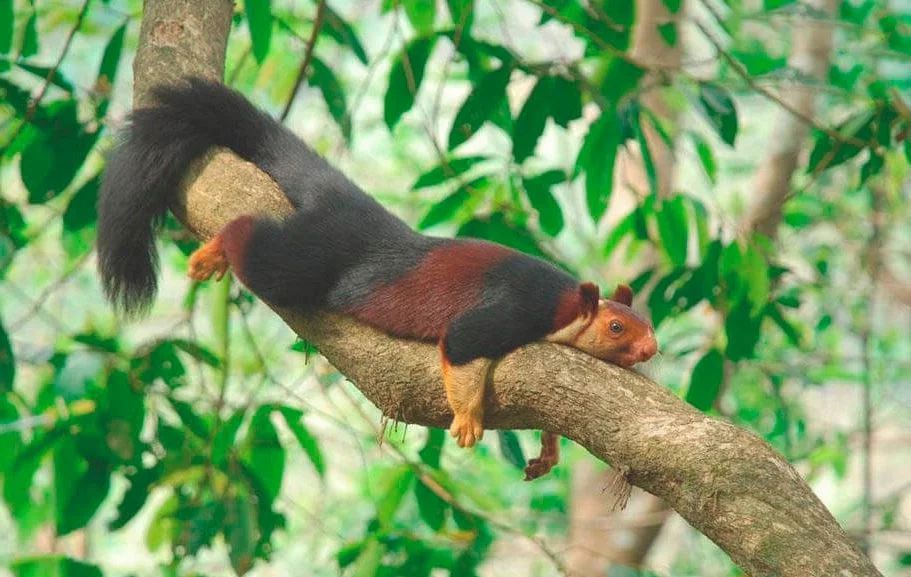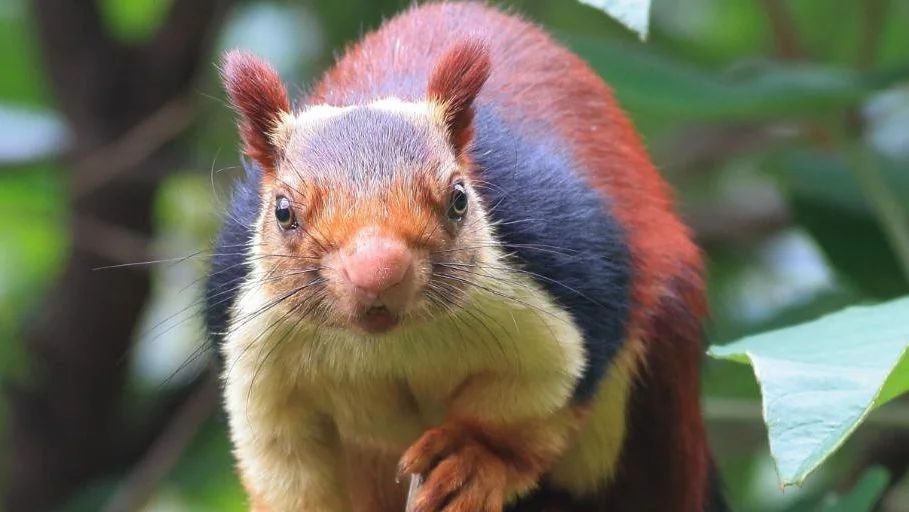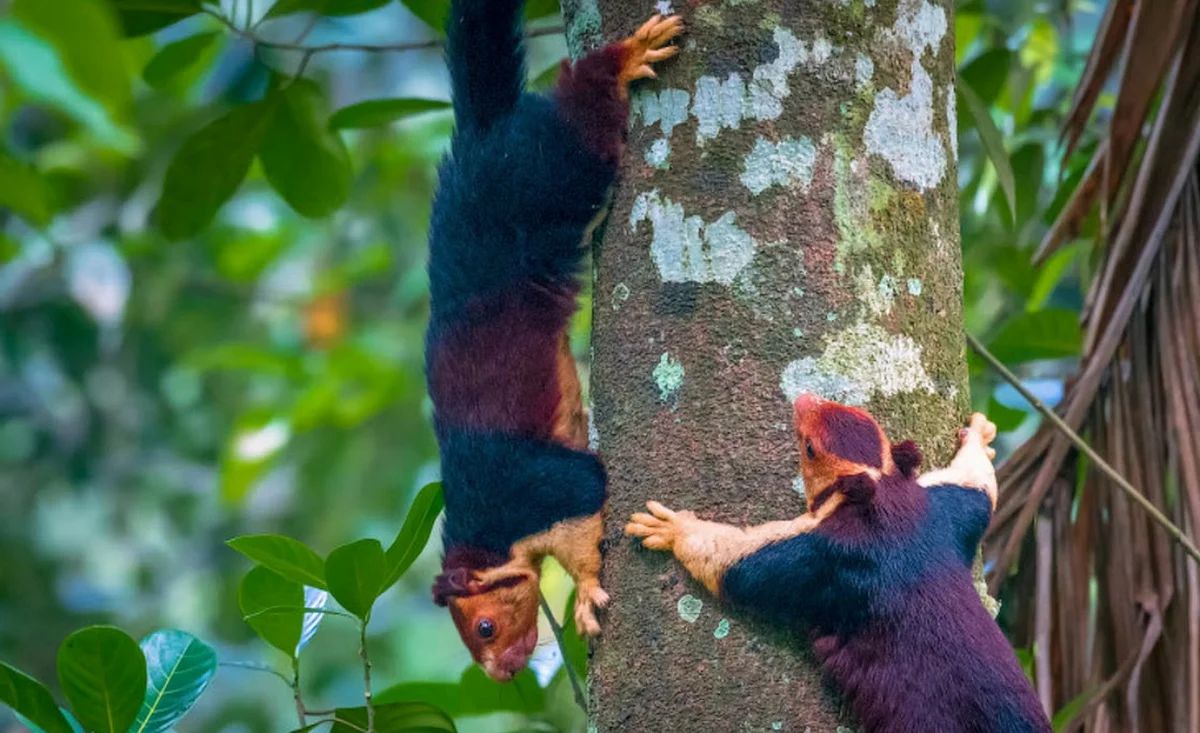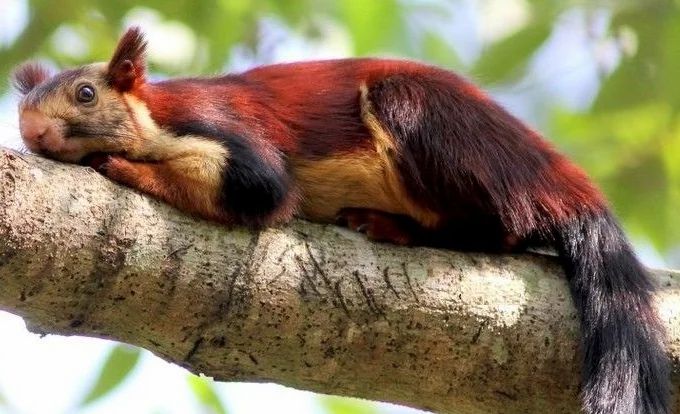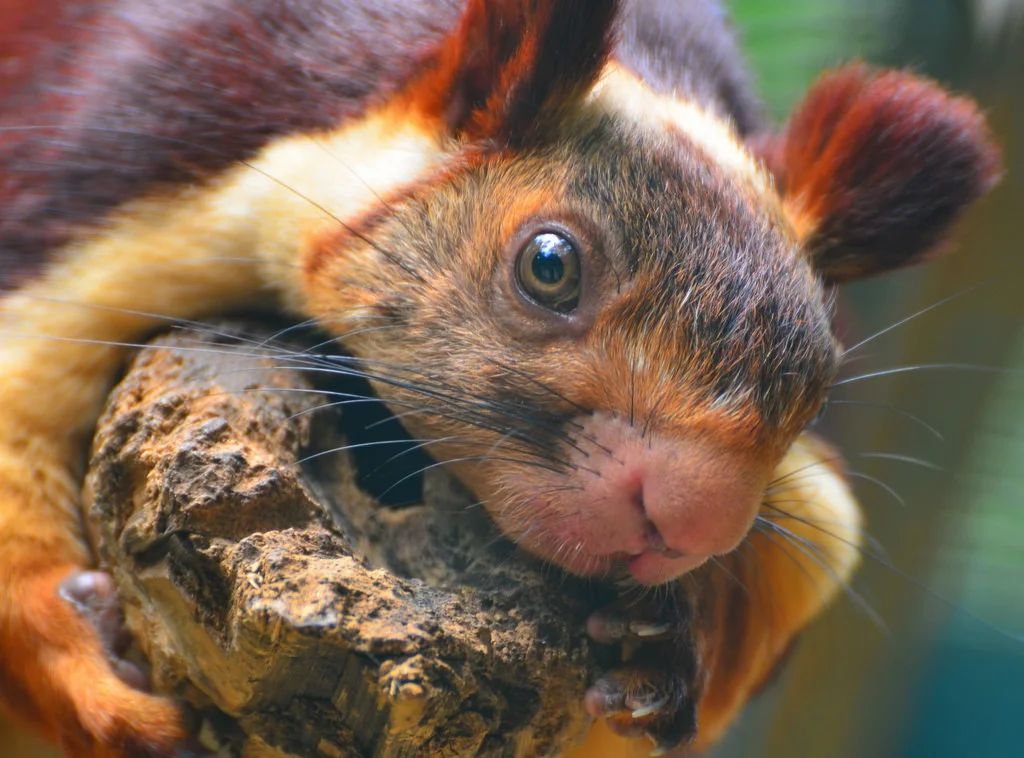The Indian Giant Squirrel: The Most Beautiful Squirrel Listed in the Red Book
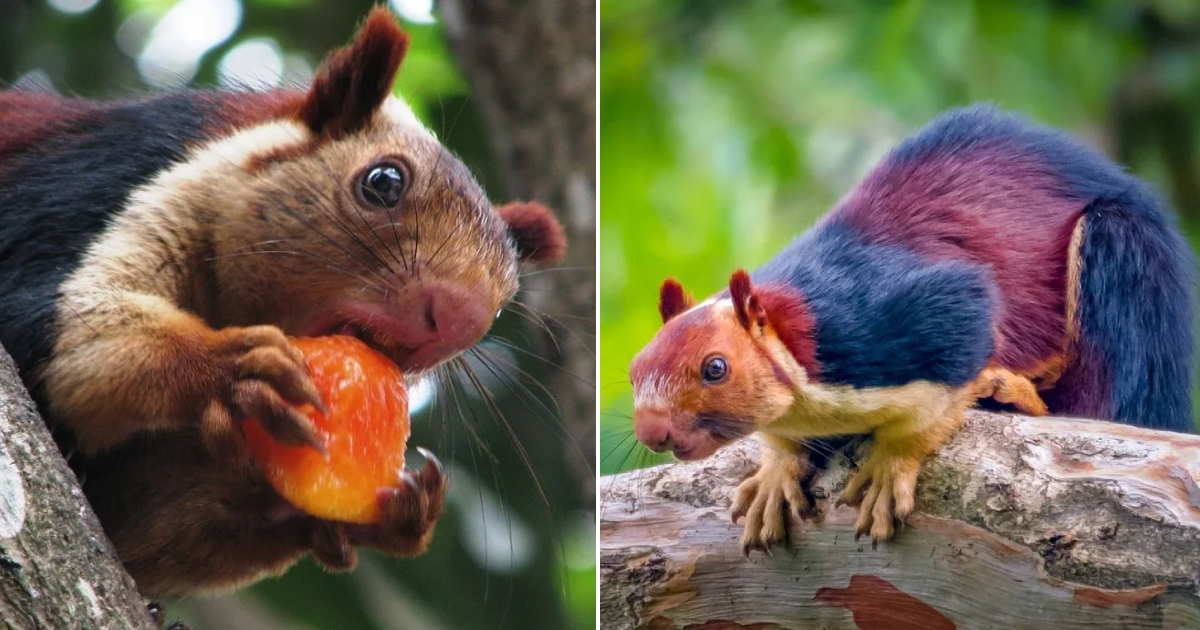
In the wild, there is a species known as the Giant Squirrel, which includes four members of the squirrel family. However, today I will only talk about one of them, the most beautiful representative of this species – the Indian Giant Squirrel.

The locals refer to these beauties as Malabar. In nature, there are four subspecies of these squirrels, each differing in color depending on their habitat. However, scientists still fiercely debate this, as some argue that there are not four subspecies, but eight.
The Indian Giant Squirrel can reach a length of half a meter, and these creatures can weigh up to three kilograms. Their colorful and fluffy tails are slightly shorter than their bodies. By the way, the tails of these animals are usually two-toned. They are certainly not the small squirrels that hop around in our forests.
These creatures primarily inhabit the Indian subcontinent. They prefer to live exclusively in the treetops and only come down to the ground during mating seasons. They build round nests for their offspring on the treetops, selecting very thin branches to prevent predators from reaching their young.
The Indian Giant Squirrel does not have specific dietary preferences. They eat fruits, nuts, bark, as well as small insects and bird eggs. These squirrels prefer to sit on their hind legs and hold their food with their front paws while feeding.
During the mating season, Indian Giant Squirrels descend to the ground. The males chase after the females and compete with each other to prove their superiority. The male squirrel prepares several nests, one for resting and sleeping, and the other exclusively for mating.
These creatures are capable of mating multiple times a year. The gestation period for the female lasts about thirty days, and usually, one or two offspring are born, rarely three or more. The maternal love of the Indian Giant Squirrel is enviable, as she cares for her young ones until they reach maturity and go on to find their own families.
In the face of danger, these adorable squirrels try to blend in and become invisible. They prefer to cling to a tree branch and remain still, hoping that everything will pass by.
In the past, they were actively hunted for their beautiful fur and allegedly delicious meat. However, in the 1980s, a reserve was established in their habitat to conserve their population.
Indian Giant Squirrels are classified as a vulnerable species and are listed in the Red Book.

